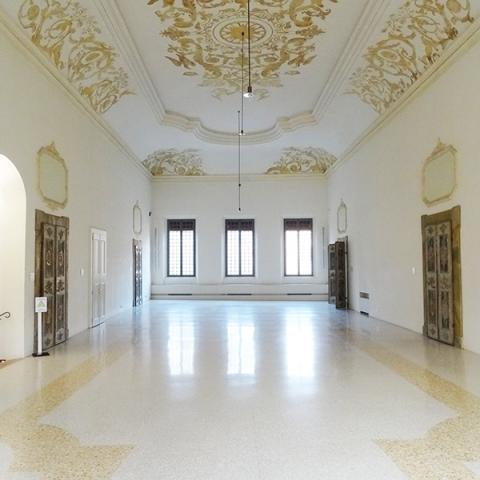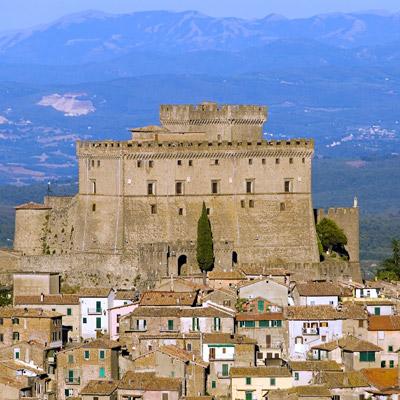Ricercatore, insegna Economia immobiliare, Estimo e Valutazione Economica dei Progetti presso il Dipartimento di Architettura, Università degli Studi di Ferrara
lgabrielli
Uno strumento decisionale per grandi patrimoni immobiliari
La ricerca ha l’obiettivo di sviluppare il modello per la progettazione di un software capace di gestire operazioni di efficientamento energetico su ampi patrimoni immobiliari, comprendendo analisi di fattibilità e processi di ottimizzazione, per supportare ed indirizzare l’iter decisionale. In particolare, nel caso di beni storici, l'efficientamento energetico è un'operazione estremamente complessa, costosa e difficile da governare, soprattutto se estesa a grandi portafogli: diventa allora cruciale valutare numerosi scenari alternativi di intervento per identificare le azioni che possano portare all’allocazione ottimale delle risorse, bilanciando al meglio risparmi e costi.
A programmatic decision-making tool for large property assets
This research aims to develop a model for the design of software capable of managing energy efficiency operations in large property assets, including feasibility analysis and optimization processes, to support and direct the decision-making process. Whether applied to historic or traditional assets, energy efficiency is a complex and expensive operation, especially if broaden to large building stocks: it becomes crucial to evaluate alternative scenarios and identify the actions that can lead to the optimal resources allocation, considering the best balance between energy savings and total costs. The assessment at the early stage of economic convenience is strategic, including methods capable of controlling both the energetic behavior of the buildings and the monetary amounts involved. This study, hence, intends to elaborate a replicable model for the preventive economic evaluation in retrofit operations, especially for large property portfolios, where it is harder to define which combination of interventions leads to the optimal result. In particular, this model is processed starting from the project, "Unife sostenibile: screening energetico del patrimonio edilizio dell’ateneo di Ferrara e proposte preliminari per la fase di programmazione degli interventi di retrofit", developed by the Research Center “Achitettura> Energia (Unife).” The project chosen has analyzed a group of buildings in Ferrara, finding their thermo-hygrometric behavior, their annual consumption and other information about their installation systems, giving us a significant database necessary to implement the economic evaluation model to a detailed case-study. Thus, the goal of the research is to produce a calculation tool which can be easily used, and which can quickly identify the best retrofit scenario. Moreover, the model should be exportable and applicable in other contexts as well by varying the input data only.
Uno strumento decisionale per grandi patrimoni immobiliari
La ricerca ha l’obiettivo di sviluppare un modello per la progettazione di un software capace di gestire interventi di efficientamento energetico su ampi patrimoni immobiliari, comprendendo analisi di fattibilità e processi di ottimizzazione, per supportare ed indirizzare l’iter decisionale. In particolare, nel caso di beni storici, l'efficientamento energetico è un'operazione estremamente complessa, costosa e difficile da governare, soprattutto se estesa a grandi portafogli: diventa allora cruciale valutare numerosi scenari alternativi di intervento per identificare le azioni che possano portare all’allocazione ottimale delle risorse, bilanciando al meglio risparmi e costi.
A programmatic decision-making tool for large property assets
This research aims to develop a model for the design of a software capable of managing energy efficiency operations in large property assets, including feasibility analysis and optimization processes, to support and direct the decision-making process. Whether applied to historic or traditional assets, energy efficiency is a complex and expensive operation, especially if broaden to large building stocks: it becomes crucial to evaluate alternative scenarios and identify the actions that can lead to the optimal resources allocation, considering the best balance between energy savings and total costs. The assessment at the early stage of economic convenience is strategic, including methods capable of controlling both the energetic behavior of the buildings and the monetary amounts involved. This study, hence, intends to elaborate a replicable model for the preventive economic evaluation in retrofit operations, especially for large property portfolios, where it is harder to define which combination of interventions leads to the optimal result. In particular, this model is processed starting from the project, " Unife sostenibile: screening energetico del patrimonio edilizio dell’ateneo di Ferrara e proposte preliminari per la fase di programmazione degli interventi di retrofit", developed by the Research Center “Achitettura> Energia (Unife).” The project chosen has analyzed a group of buildings in Ferrara, finding their thermo-hygrometric behavior, their annual consumption and other information about their installation systems, giving us a significant database necessary to implement the economic evaluation model to a detailed case-study. Thus, the goal of the research is to produce a calculation tool which can be easily used, and which can quickly identify the best retrofit scenario. Moreover, the model should be exportable and applicable in other contexts as well by varying the input data only.

VILLE VENETE
Questo contributo vuole approfondire il tema relativo allo studio del comportamento dei valutatori di Ville Venete, in modo particolare si sofferma sulle loro scelte, quando chiamati ad esprimere giudizi a livello teorico, senza un bene concreto con cui confrontarsi. A tale scopo è stato utilizzato un modello di valutazione multi-attributo, nello specifico un approccio gerarchico (Analytic Hierarchy Process_AHP), procedura fondata sull’ipotesi che il valore unitario di stima dei beni oggetto di studio possa essere espresso in funzione delle loro singole caratteristiche definibili quali criteri e sotto-criteri.
THE VENETIAN VILLAS
This research wants to check how the valuers' choices can change when the judgments are taken on a hypothetical level, because it does not exist a comparable asset.
For this purpose, a multi-attribute model was used, specifically, an Analytic Hierarchy Process_AHP. The multi-criteria analysis is a multidisciplinary approach that aims to analyse a problem from different perspectives, such as, that economic, social, aesthetic, historical and administrative.
The multi-criteria analysis, therefore, is structured to support the decision-making, to identify areas with more or less opportunities, highlight the priorities and the differences between the options and define the best resource allocation to reach the initial goal.
It may be useful to identify the values, formulate objectives, identify alternatives, analyse the impacts and build a valuation model.
The AHP tool can be applied in the resolution of estimation problems, and in the context of the analysis of the enhancement projects of public assets, including interventions on cultural, environmental resources.
It is based on the assumption that the asset value can be expressed as a function of their characteristics, called criteria and sub-criteria. It is a decision support system based on multiple criteria, capable of treating a large number of different factors. The first step of this method involves the construction of a hierarchy of dominance. This is a reticular structure composed of two or more levels. The first level contains the goal, in this case, it is the impact of individual characteristics on the value of a Venetian Villa.
The valuation was realized using a panel of experts about historical assets, in particular Venetian Villas. They completed a questionnaire that was based on pairwise comparison of each criteria and sub-criteria, and, thanks to the combination of the average scores, it has been possible to build the hierarchy of incidence for each variable. The elements of each pair are compared in order to determine which of them is most important in relation to the element in higher-level.
LA STIMA DI UN BENE STORICO-ARCHITETTONICO
Definito il concetto di “bene culturale” e dei valori che esso incarna, è necessario studiare quali strumenti possano essere impiegati per attuare e concretizzare progetti di valorizzazione di siti di interesse storico, nello specifico il processo di alienazione. Risultano, perciò, determinanti il momento della stima ed il ruolo del valutatore.
Si vuole, quindi, studiare il processo di stima e la formazione della funzione di valutazione della tipologia edilizia Villa Veneta. Attraverso lo strumento di regressione si analizzano le caratteristiche dell’immobile che risultano essere maggiormente significative per individuare il più probabile valore di mercato.
THE VALUATION OF HISTORICAL HERITAGE
For over a century, the condition of abandonment of the historical heritage has been the center of political and legal discussions. The historical heritage enhancement has been mainly treated focusing on the concept of cultural heritage, as presented by regulations, which have taken place from the 800s to the present day. This showed that over time an awareness of the economic value of those assets, and the need for their conservation and enhancement, has developed.
After defining the concept of cultural heritage and its values, the paper explores the tools used for implementing the enhancement projects, in particular, the alienation process. As regards the latter, the valuation moment and the role of the valuer become strategic.
This paper aims to underline how the historical assets are totally heterogeneous and dissimilar, and for this reason, consolidated valuation techniques do not exist in literature or in practice. It is, therefore, necessary to dwell on the study of a particular historical building type, such as that of the Venetian Villas. They are widespread in the territories included between the regions of Veneto and Friuli Venezia Giulia, and represent a unique architectural testimony, in national and international context, of a process of an urban civilization rootedness (Republic of Venice) in a rural area. The Venetian nobility, from the XIV century, bought properties and invested significant amounts in agriculture. In those properties, villas were built assuming the double function of place of leisure and center of the farm. The traditional techniques for historical buildings valuation have to deal with many issues, such as externalities, intangible effects, long-term perspective so that it is quite difficult to value a cultural asset. For instance, the Market comparison approach requires a series of historical data that are not always easy to find, while the Discounted Cash Flow Analysis that applies only to cases where a detailed transformation project already exists, and the Cost Approach, that considers appreciation added percentages, often arbitrary, to emphasize the property artistic value.
Therefore, the rationality and the behavior of the valuers of this type of assets were explored, focusing on the study of the valuation process and function, with the application of multiple linear regression, analyzing, its results and data relating to the variance.
LA VALORIZZAZIONE DEL PATRIMONIO STORICO
La condizione, spesso, di abbandono e mancata conservazione in cui versa il patrimonio storico italiano è divenuta un’emergenza nazionale. Questo contributo vuole presentare, con un’ottica storico-evolutiva, gli strumenti normativi emanati negli anni sul tema della valorizzazione, nonché gli obiettivi che il legislatore ha voluto perseguire.
THE ARCHITECTURAL HERITAGE ENHANCEMENT
The condition of neglect and lack of preservation of the architectural heritage is considered a national emergency.
Through a historical-evolutionary view, this paper aims at presenting the regulatory instruments that have been developed over the years about the topic of enhancement and the different aims that the legislature has intended to pursue.

